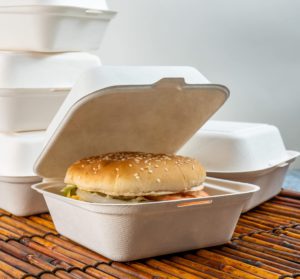When it comes to designing cars, every component plays a crucial role in achieving optimal performance, including car mirrors. While mirrors are primarily associated with enhancing visibility and safety, their design also impacts a vehicle’s aerodynamics and fuel efficiency. In this article, we will explore how mirror companies play a significant role in developing efficient mirror designs that minimize drag and improve fuel economy.
Understanding Aerodynamics and Its Relationship to Car Mirrors
Aerodynamics refers to the study of how air flows around objects. In the context of car design, achieving good aerodynamics is essential to reduce drag, improve stability, and enhance fuel efficiency. Car mirrors, being an external component, influence the aerodynamics of a vehicle in the following ways:
1. Wind Resistance and Drag:
– Large and protruding side mirrors can create substantial wind resistance and drag.
– This leads to increased turbulence and puts additional strain on the engine, consequently reducing fuel efficiency.
2. Airflow Disruption:
– Ill-designed mirrors can disrupt the smooth airflow along the sides of the car, leading to increased drag.
– The disrupted airflow can create turbulence and result in resistance, impacting the overall performance of the vehicle.
Mirror Companies’ Innovations for Improved Aerodynamics
Mirror companies are continuously working on innovative designs to minimize the negative impact of car mirrors on aerodynamics. Here are some notable approaches:
1. Streamlined Shapes:
– Mirror companies are developing mirror designs with streamlined shapes that reduce wind resistance.
– These sleek designs help direct airflow smoothly around the mirrors, minimizing drag and improving the overall aerodynamics of the vehicle.
2. Folding Mechanisms:
– Some mirror designs include folding mechanisms that allow the mirrors to retract when not in use.
– By reducing the overall width of the vehicle, the folding mirrors enhance aerodynamics and reduce drag when parked or at high speeds.
3. Mirror Materials:
– Mirror companies are exploring lightweight materials like carbon fiber and aluminum for mirror construction.
– These materials maintain durability while reducing the weight of the mirrors, which in turn lowers aerodynamic drag and improves fuel efficiency.
Fuel Efficiency Benefits of Efficient Mirror Design
Efficient mirror design not only improves aerodynamics but also contributes to enhanced fuel efficiency. Here’s how:
1. Reduced Drag:
– By reducing the drag caused by ill-designed mirrors, the vehicle requires less power to overcome air resistance.
– The reduction in drag allows the engine to operate more efficiently, resulting in improved fuel economy.
2. Weight Reduction:
– Lightweight materials used in mirror construction contribute to overall weight reduction.
– With lighter mirrors, the vehicle’s mass is reduced, requiring less energy to move, thus leading to fuel efficiency gains.
Regulations and Standards Promoting Efficient Mirror Design
Regulatory bodies and industry standards play a vital role in promoting efficient mirror design. Here are some examples:
1. Federal Motor Vehicle Safety Standards (FMVSS):
– FMVSS regulations focus on mirror placement, size, and visibility requirements to ensure driver safety.
– Compliance with these standards ensures that mirror companies consider safety aspects along with aerodynamics and fuel efficiency.
2. Global Harmonization Task Force (GHTF):
– GHTF works on standardizing automotive design and safety regulations globally.
– Through harmonization, GHTF encourages mirror companies to develop innovative designs that consider both safety and efficiency.
Conclusion
Car mirror design significantly impacts a vehicle’s aerodynamics and fuel efficiency. Mirror companies are investing in innovative approaches to develop streamline mirror designs, lightweight materials, and smart folding mechanisms. These advancements not only reduce drag and turbulence but also improve fuel economy. Regulatory standards further ensure that efficient mirror designs meet safety and performance requirements. As mirror companies continue their efforts to balance aesthetics, visibility, and efficiency, drivers can expect reduced drag, enhanced fuel efficiency, and an improved driving experience.





Be First to Comment